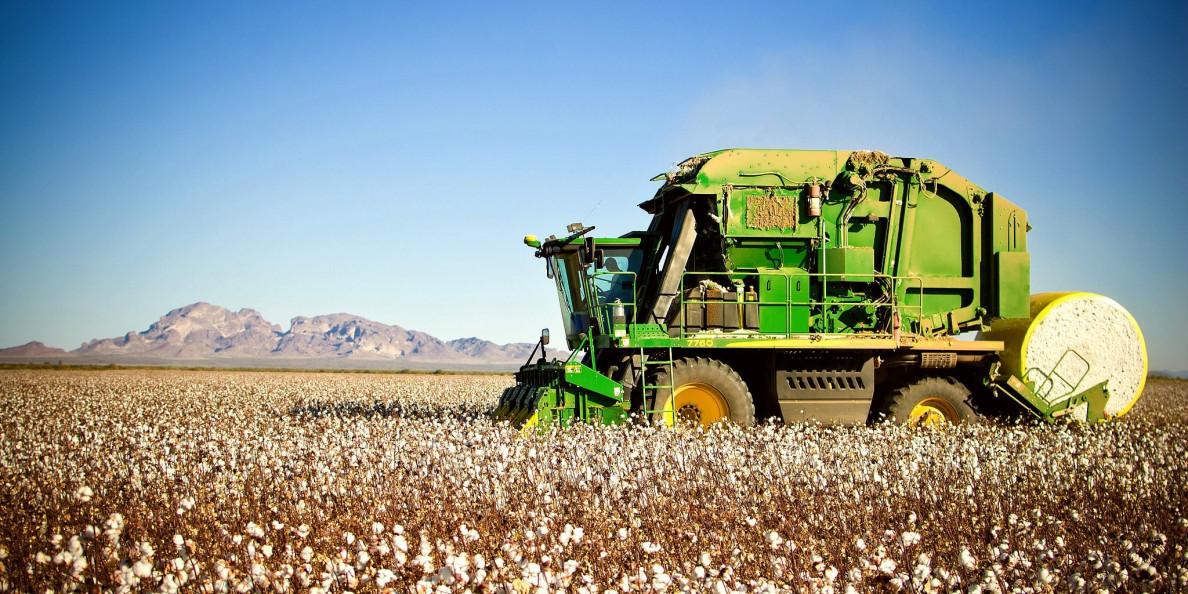Wrangler analyzed dozens of scientific studies to show that sustainable cotton farming techniques improve crop yields and reduce costs while slashing greenhouse gas emissions.
For the new report, called “Seeding Soil’s Potential,” Wrangler’s soil health advisors reviewed more than 45 scientific papers and reviews from academic, government, and industry researchers, the company says. Expert input came from the USDA’s Natural Resources Conservation Service (NRCS), the Nature Conservancy, and the Soil Health Institute.
In the US, cotton is farmed on around 12.5 million acres, accounting for 16% of global production, the company says. The denim manufacturer concluded that practicing sustainable cotton farming techniques results in the removal of three times the amount of greenhouse gas emissions from the atmosphere compared to conventional farming methods.
“Conventional cotton cultivation practices disturb and degrade the soil with tillage, bare soil surfaces, chemical inputs, and continuous monoculture crop production,” the report says. “The value of strong and healthy soil can be underestimated, but there is burgeoning interest across the supply chain, from farmers to brands, to implement practices that build and protect the soil.”
Techniques highlighted in Wrangler’s report:
- Conservation tillage includes practices that reduce soil disturbance and maintain a minimum of 60% residue cover on the soil surface throughout the year. “Conservation tillage can reduce the number of equipment passes required in the field, saving time and money,” the report says. Other benefits include a reduction in overall machinery costs and less maintenance.
- Cover crops produce biomass above and below the ground, reduce erosion and nutrient loss, and enhance the soil structure and composition. “These cover crops are not typically harvested and are terminated prior to cotton planting with an herbicide treatment or by crimping the plant,” the report notes. Multiple benefits include nutrient cycling.
- Conservation crop rotations can pay off over the long-term with greater cotton yields, lower production costs, and increased environmental benefits compared to continuous monoculture cropping. “[I]t is a well-accepted approach to manage pests and diseases and reduce the demand for herbicides,” the report says. Diverse crops also provide value by increasing diversity below ground, resulting in a more resilient soil.
Wrangler introduced a soil health program last year aimed at bolstering the supply of sustainable cotton and encouraging wider adoption of responsible farming practices. That program now includes cotton producers from Tennessee, Alabama, Georgia, North Carolina, and Texas.
Over the summer Wrangler joined Field to Market, a multi-stakeholder initiative working to increase supply chain sustainability around natural resources. Wrangler recently said that the program’s Fieldprint Calculator, along with programs like organic certification, help cotton producers communicate what they are doing with their supply chains.
The new report also highlighted an ecosystem service market program led by the Noble Research Institute that aims to monetize soil health to reward producers using practices that protect the environment.
“Over 35 companies are committed to sourcing sustainable cotton by 2025, delivering a strong market signal for this type of work at the farm level,” Wrangler says. The jeans maker also says the company is partnering with US cotton farmers and plans to double the use of sustainably-farmed cotton by 2019.
The 3rd Annual Environmental Leader & Energy Manager Conference takes place May 15 – 17, 2018 in Denver. Learn more here.


